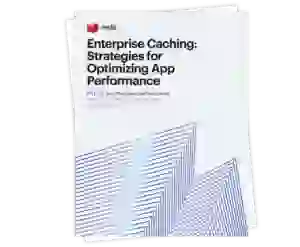
Every second of delay tests a user’s patience. A seemingly minor inconvenience reflects deeper database management issues. A small hiccup can have outsized repercussions. Slow queries aren’t just technical obstacles. They represent potential fissures in customer loyalty and confidence.
Imagine you’re at a bustling coffee shop during the morning rush. The barista, overwhelmed by an influx of complex drink orders, struggles to keep up. Customers get impatient, the line extends out the door, and the entire operation slows down. If this happens frequently, those previously-loyal customers are motivated to buy their Frappuccino elsewhere.
With databases, queries can become the equivalent of complex drink orders. They bog down the system and affect business operations. At a global financial institution that processes millions of transactions daily, a slow query could delay updates on account balances, leading to discrepancies and eroding customer trust.
Understanding the reasons behind the coffee shop delay might lead to solutions, such as an extra barista or a better ordering system. Similarly, pinpointing the causes of slow queries can help businesses streamline their operations.
The speed and efficiency of websites and applications play a pivotal role in shaping the customer experience. According to a report by Think with Google, a mere one tenth of a second’s delay in mobile page load can impact conversion rates by up to 10%. Just as a barista’s efficiency at a coffee shop can make or break the morning rush, site or application speed can determine its success in the digital marketplace. Slow-loading sites and applications, often a result of slow queries, can lead to user frustration, decreased engagement, and lost business opportunities.
A slow query is a database query that takes an unusually long time to execute. This extended “long query time” can be attributed to any number of factors, ranging from the intricacies of SQL statements to underlying server complications. The technical repercussions of slow queries are manifold, leading to delayed data retrieval, prolonged page load times, and sluggishness in system operations.
Just as a barista might grapple with a sudden influx of complex drink orders, databases too can be bogged down by intricate queries.
Complex SQL statements: SQL queries are powerful, but their efficiency varies. An unoptimized SQL statement often increases execution times. For example, using the DIST keyword without proper indexing harms query performance.
Server configuration nuances: Configuration files make a big difference in database performance. The settings you choose in the MySQL my.cnf file directly affect database speed, especially if you misconfigure them or don’t adjust settings to the current user load or data center specifications.
Underlying server performance: The base server, whether a MySQL server, Apache Cassandra, or SQL Server, needs adequate resources to handle database queries efficiently. Resource constraints, whether memory or CPU-related, lead to slow-running queries.
Network latency: Network speed and reliability are essential for distributed databases or systems that use cloud storage. The typical effect of high network latency is delayed query execution.
Concurrency issues: When many users or applications access the database simultaneously, resource contention slows down query performance.
Suboptimal query plans: The database engine creates a plan to execute a query. Sometimes, it selects a less efficient plan. End result: slower execution times.
Database maintenance failures: Optimize performance by performing regular maintenance tasks including updating statistics, defragmenting indexes, and clearing old log files. Ignore these tasks at your peril.
Lack of proper caching: Implement caching mechanisms to dramatically speed up frequently accessed data. Without caching, the database might process the same time-consuming queries repeatedly.

Boost your app’s performance to new heights with Redis enterprise caching. Tailored for the demanding needs of modern applications, our solution ensures you stay ahead of the competition. Read our free e-book Enterprise Caching: Strategies for Optimizing App Performance to learn more.
There are no magic wands, alas. Dealing with slow queries requires a combination of tactics, tools, and expertise. If you don’t want to spend your time reacting to performance problems, plan ahead.
Optimize SQL statements
Review configuration files
Perform an In-depth log analysis of slow queries
Explore alternative database systems
Just as a doctor monitors vital signs to gauge a patient's health, developers and operations monitor database queries to ensure the company’s digital heartbeat remains strong and steady. Slow queries sometimes are subtle and insidious, and they gradually erode a system's efficiency and a business's credibility.
Keep a vigilant eye on database performance to preempt potential pitfalls. Among the tools and techniques that make this vigilance possible:
As technology continues to evolve, so do the challenges associated with database management. Big Data, IoT, and AI-driven applications all generate a huge amount of data, putting more of a burden on your existing systems and possibly straining them. As datasets grow, those databases will be subjected to even more intensive workloads, which means it’s even more critical to address slow queries. One possibility to look forward to is that AI and machine learning might play a role in automatically optimizing database queries. Imagine a world where your database system learns from past queries, identifies patterns, and automatically optimizes new queries.